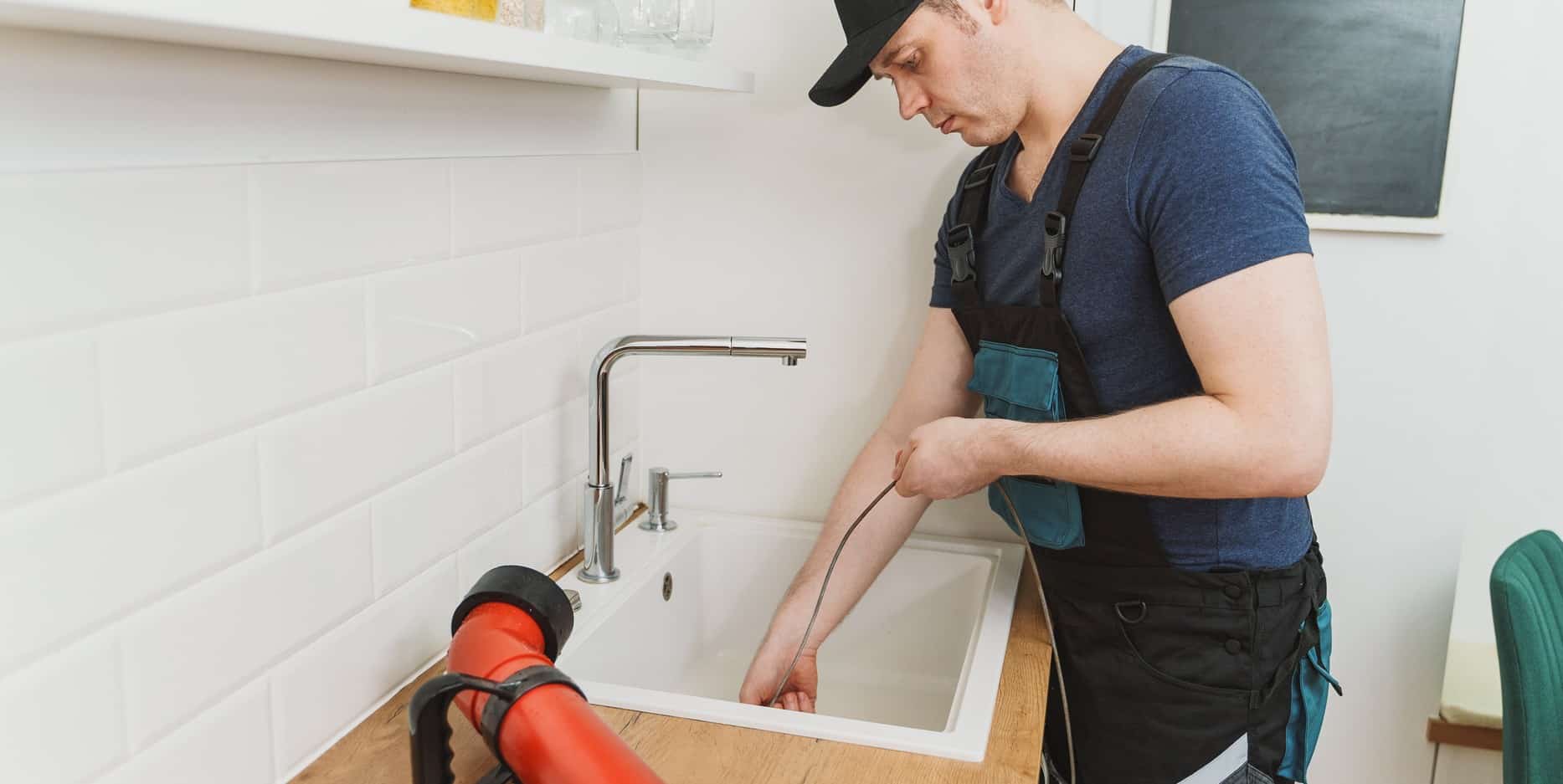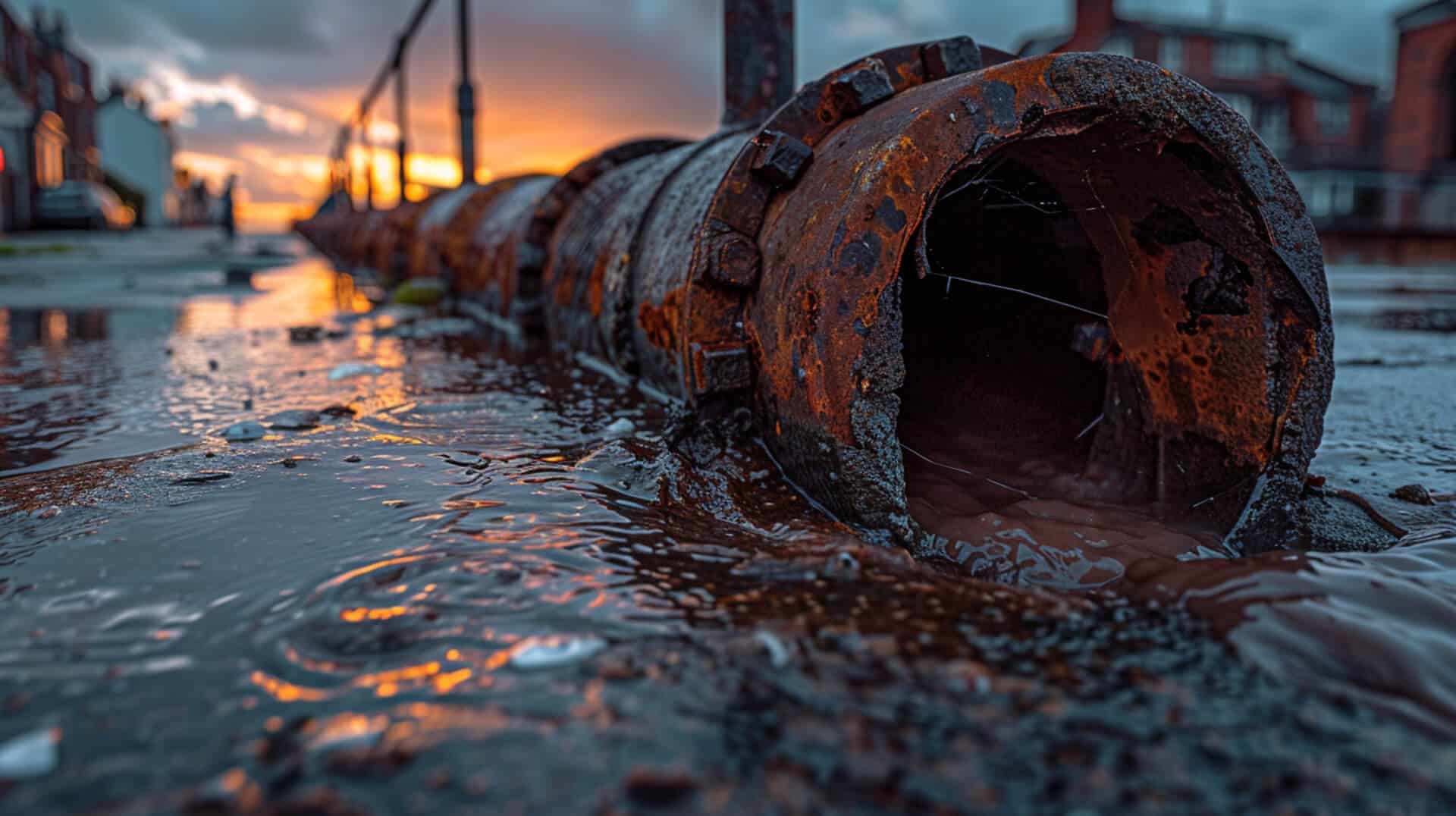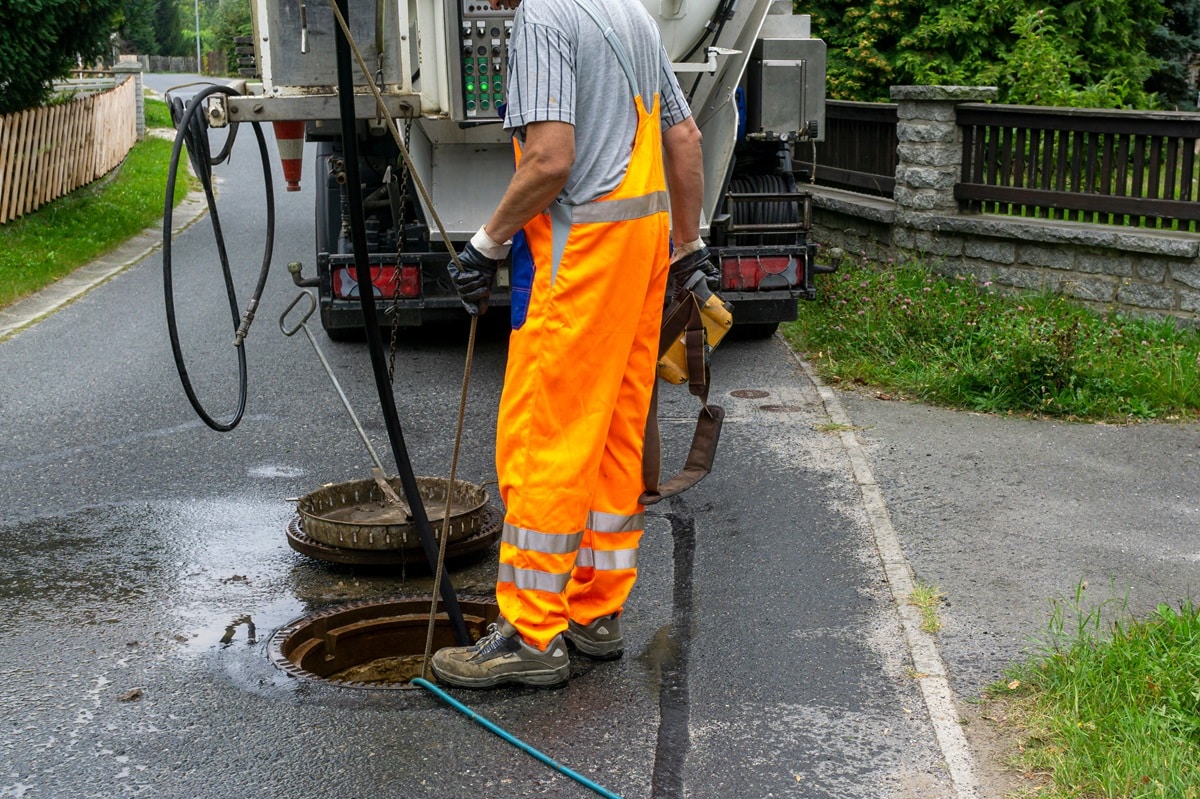 Paint and Building Materials: Unexpected Causes of Drain Blockages
Paint and Building Materials: Unexpected Causes of Drain Blockages
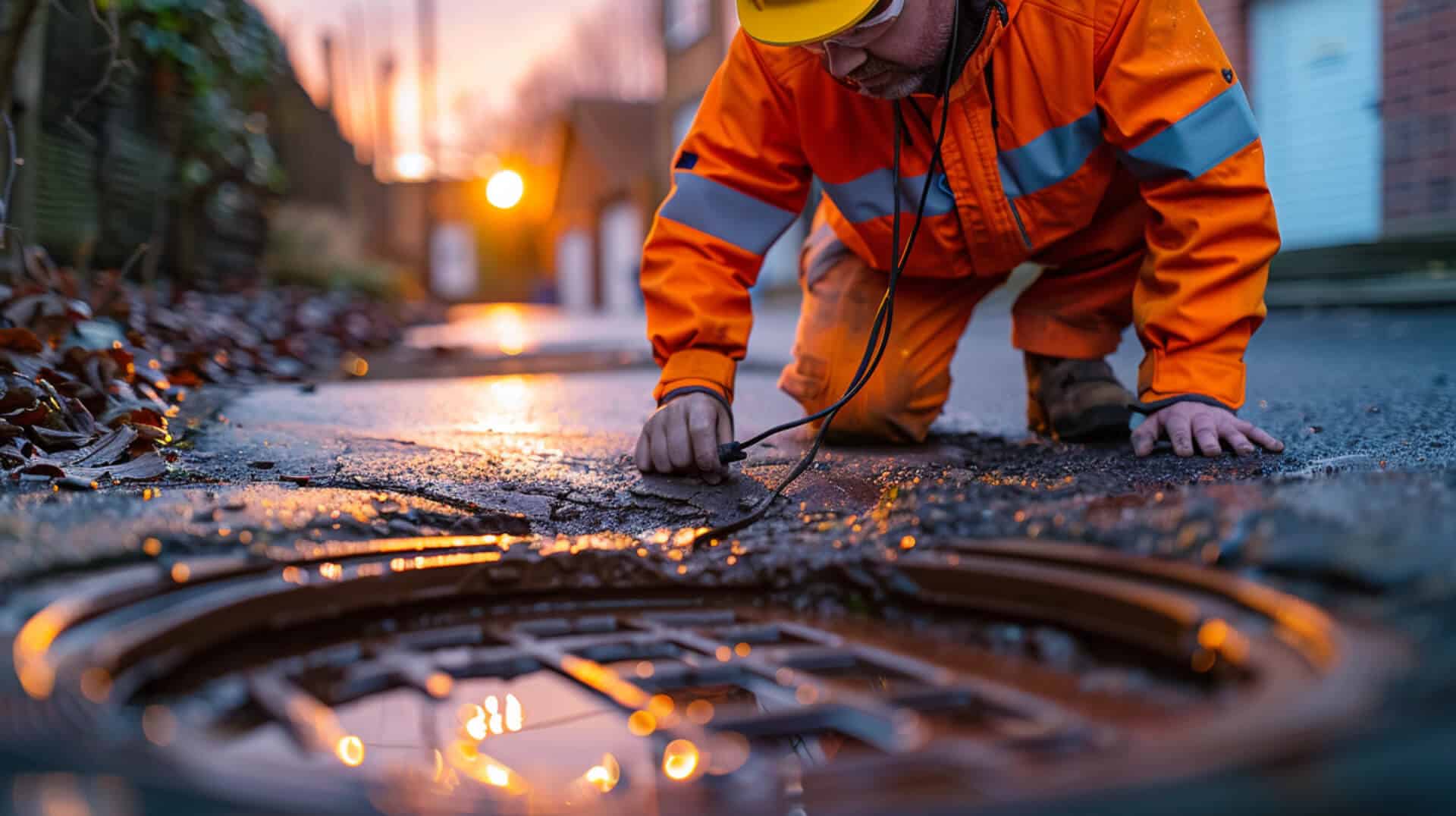
What Will Be Covered?
Blocked drains are a common issue that can lead to significant inconvenience and potential damage. This guide focuses specifically on the causes of blocked drains due to paint and building materials. Understanding these causes is crucial for property owners, business owners, and facility managers who are responsible for maintaining the integrity of their drainage systems.
Common Causes of Blocked Drains
Blocked drains can result from various factors, including hair, soap scum, grease, food remnants, tree roots, wet wipes, toiletries, coffee grounds, paint, foreign objects, leaves, and poor drain installation. Each of these elements can contribute to the accumulation of debris and the eventual obstruction of drainage systems.
Why Focus on Paint and Building Materials?
Paint and building materials are often overlooked as potential culprits for blocked drains. However, these substances can coat and clog pipes, leading to severe blockages. Understanding how these materials cause blockages and learning proper disposal methods can prevent significant issues and ensure the longevity of drainage systems.
Target Audience
This guide is designed for property owners, business owners, and facility managers who are responsible for maintaining drainage systems. It provides valuable information on the causes, implications, and solutions for blocked drains due to paint and building materials.
How This Guide Helps
By following the guidelines and preventive measures outlined in this guide, readers can:
- Identify the types of paint and building materials that cause blockages.
- Understand the mechanisms by which these materials block drains.
- Recognise the signs of blockages caused by paint and building materials.
- Learn proper disposal methods to prevent blockages.
- Implement preventive measures to maintain clear and functional drainage systems.
This guide aims to equip readers with the knowledge and tools necessary to address and prevent blockages caused by paint and building materials, ensuring the efficient operation of their drainage systems.
Types of Paint and Building Materials That Cause Blockages
Blocked drains can be caused by various types of paint and building materials. Understanding these materials and their characteristics can help in preventing and addressing blockages effectively.
Types of Paint
Latex Paint: Latex paint, commonly used for interior walls, can cause blockages when washed down the drain. The paint particles can accumulate and form a thick layer inside the pipes.
Oil-Based Paint: Oil-based paint is more problematic due to its thicker consistency and slower drying time. It can adhere to the pipe walls and create significant blockages.
Building Materials
Cement and Plaster: Cement and plaster are often used in construction and renovation projects. When these materials are washed down the drain, they can solidify and form hard blockages that are difficult to remove.
Adhesives: Certain adhesives, such as those used for tiling and flooring, can also contribute to drain blockages. These materials can stick to the pipe walls and attract other debris, leading to severe clogs.
Characteristics Leading to Blockages
- Coating of Pipes: Paint and adhesives can coat the interior of pipes, reducing the diameter and restricting water flow.
- Solidification and Hardening: Cement, plaster, and certain adhesives can solidify inside the pipes, creating hard blockages that are challenging to clear.
- Accumulation Over Time: Repeated disposal of these materials can lead to gradual accumulation, eventually causing a complete blockage.
By understanding the types of paint and building materials that cause blockages and their characteristics, property owners, business owners, and facility managers can take preventive measures to avoid drain issues.

Mechanisms of Blockage by Paint and Building Materials
Blocked drains caused by paint and building materials can be particularly challenging to address. Understanding the mechanisms behind these blockages is essential for effective prevention and resolution.
How Paint Residue Coats and Blocks Pipes
Paint residue, when washed down the drain, can adhere to the interior surfaces of pipes. This coating process involves the following steps:
- Adhesion: Paint particles stick to the pipe walls, creating a thin layer.
- Accumulation: Over time, additional paint particles accumulate on this layer, gradually thickening it.
- Restriction: The buildup reduces the pipe’s diameter, restricting water flow and leading to blockages.
Solidification and Hardening of Building Materials
Building materials such as cement, plaster, and certain adhesives can solidify inside pipes, causing severe blockages. The process includes:
- Initial Flow: Liquid or semi-liquid materials enter the drain.
- Solidification: These materials harden as they cool or dry, forming solid masses.
- Obstruction: The solidified materials obstruct the flow of water, leading to blockages.
Accumulation Over Time
Repeated disposal of paint and building materials can result in gradual accumulation within the pipes. This process involves:
- Incremental Buildup: Small amounts of materials accumulate with each disposal.
- Layer Formation: Layers of residue form, progressively narrowing the pipe.
- Complete Blockage: Eventually, the buildup can lead to a complete blockage, preventing any water flow.
Differences from Other Common Causes of Blockages
Blockages caused by paint and building materials differ from other common causes in several ways:
- Chemical Composition: Unlike organic materials, paint and building materials have chemical properties that allow them to adhere and solidify.
- Durability: These materials are often more durable and harder to remove than organic blockages.
- Environmental Impact: Improper disposal of these materials can have significant environmental consequences, unlike some other common blockages.
Understanding these mechanisms helps property owners, business owners, and facility managers take appropriate preventive measures and address blockages effectively.
Signs of Blockages Caused by Paint and Building Materials
Blocked drains caused by paint and building materials can present several distinct signs. Recognising these early warning indicators can help in addressing the issue promptly and effectively.
Early Warning Signs of a Blockage
Unpleasant Smells: One of the first signs of a blockage is the presence of unpleasant odours emanating from drains. These smells can indicate that paint or building materials are trapped and decomposing within the pipes.
Slow Drainage: If water is draining slowly from sinks, bathtubs, or showers, it may signify a blockage. Paint and building materials can reduce the pipe diameter, causing water to drain more slowly than usual.
Indicators of Severe Blockages
Water Backups: Water backing up into sinks, bathtubs, or toilets is a clear sign of a severe blockage. This occurs when the flow of water is completely obstructed by solidified paint or building materials.
Dampness and Mould Around Drainage Lines: The presence of dampness or mould around drainage lines can indicate leaks or blockages. Paint and building materials can cause pressure buildup, leading to leaks and subsequent mould growth.
Additional Signs
- Gurgling Sounds: Gurgling noises from drains can suggest that air is trapped due to a blockage. This is often caused by the accumulation of paint or building materials within the pipes.
- Small Pools of Water: Small pools of water around drains, especially in showers, can indicate that water is not flowing freely due to a blockage.
By being aware of these signs, property owners, business owners, and facility managers can take timely action to address blockages caused by paint and building materials, preventing further complications.

Environmental Impact of Improper Disposal
Improper disposal of paint and building materials can have significant environmental consequences. Understanding these impacts is crucial for property managers, business owners, and facility managers.
Hazardous Chemicals Involved
Paint and building materials often contain hazardous chemicals that can be harmful to the environment. These chemicals include:
- Volatile Organic Compounds (VOCs): Found in many paints, VOCs can evaporate and contribute to air pollution.
- Heavy Metals: Some paints and building materials contain heavy metals like lead and mercury, which are toxic to both humans and wildlife.
- Solvents: Used in various paints and adhesives, solvents can contaminate water sources if not disposed of properly.
Effects on Water Quality
Improper disposal of these materials can lead to contamination of water sources. This occurs through:
- Leaching: Hazardous chemicals can leach into groundwater, affecting drinking water supplies.
- Runoff: During rain, improperly disposed materials can be washed into rivers and lakes, degrading water quality.
Impact on Local Ecosystems
The environmental impact extends to local ecosystems, where improper disposal can cause:
- Toxicity to Aquatic Life: Chemicals from paints and building materials can be toxic to fish and other aquatic organisms.
- Disruption of Food Chains: Contaminants can accumulate in the food chain, affecting various species and overall ecosystem health.
Importance of Environmental Responsibility
Environmental responsibility is essential for property managers and other stakeholders. Key reasons include:
- Regulatory Compliance: Adhering to environmental regulations helps avoid legal penalties and promotes sustainable practices.
- Community Health: Proper disposal practices protect community health by preventing exposure to hazardous chemicals.
- Sustainability: Responsible disposal contributes to long-term environmental sustainability, ensuring resources are preserved for future generations.
By understanding and addressing the environmental impact of improper disposal, stakeholders can take proactive measures to protect the environment and comply with regulations.
Proper Disposal Methods for Paint and Building Materials
Proper disposal of paint and building materials is essential to prevent blocked drains and environmental harm. Understanding the available methods and regulations can help ensure safe and responsible disposal.
Hazardous Waste Centres
What Are Hazardous Waste Centres?
Hazardous waste centres are facilities designed to handle and dispose of hazardous materials safely. These centres accept various types of waste, including paint and building materials, ensuring they are processed in an environmentally friendly manner.
How Do They Work?
- Collection: Individuals can drop off hazardous materials at designated centres.
- Processing: The materials are sorted, treated, and disposed of according to safety protocols.
- Environmental Protection: These centres prevent hazardous substances from entering the environment, protecting water sources and ecosystems.
Recycling Centres
How Can Recycling Centres Help with Disposal?
Recycling centres provide an alternative for disposing of certain building materials. These centres focus on repurposing and recycling materials to reduce waste.
- Accepted Materials: Some recycling centres accept items like latex paint, which can be reprocessed and reused.
- Community Programmes: Many centres offer community programmes to educate the public on proper disposal and recycling practices.
Community Programmes for Hazardous Waste Disposal
What Community Programmes Are Available?
Local governments and organisations often run community programmes to facilitate the safe disposal of hazardous waste. These programmes may include:
- Collection Events: Scheduled events where residents can bring hazardous materials for safe disposal.
- Educational Initiatives: Programmes to inform the public about the importance of proper disposal and available resources.
Government Regulations
What Are the Government Regulations Regarding Disposal?
Government regulations mandate the proper disposal of hazardous materials to protect public health and the environment. Key aspects include:
- Compliance Requirements: Regulations specify how hazardous materials must be handled, transported, and disposed of.
- Penalties for Non-Compliance: Failure to comply with disposal regulations can result in fines and legal action.
By following these proper disposal methods, property owners, business owners, and facility managers can prevent blocked drains and contribute to environmental sustainability.
Preventive Measures to Avoid Blockages
Blocked drains caused by paint and building materials can be prevented through several effective measures. Implementing these practices can help maintain clear and functional drainage systems.
Regular Cleaning and Maintenance
How Can Regular Cleaning and Maintenance Help?
Regular cleaning and maintenance are essential to prevent the buildup of paint and building materials in drains. This involves:
- Routine Flushing: Flushing drains with hot water can help dissolve and move any residual materials.
- Scheduled Cleaning: Using appropriate cleaning agents periodically to break down any accumulated substances.
Benefits of Using Drain Guards
What Are the Benefits of Using Drain Guards?
Drain guards are simple yet effective tools that can prevent blockages by trapping debris before it enters the drainage system. Benefits include:
- Prevention of Solid Particles: Drain guards can catch solid particles, such as paint chips and small pieces of building materials, preventing them from entering the pipes.
- Ease of Cleaning: Regularly cleaning the drain guards ensures that trapped debris is removed before it causes any issues.
Responsible Disposal of Wastes
Why Is Responsible Disposal of Wastes Crucial?
Proper disposal of paint and building materials is crucial to prevent blockages and environmental harm. Key practices include:
- Avoiding Drains: Never dispose of paint or building materials down the drain. Instead, use designated disposal methods.
- Using Hazardous Waste Centres: Take hazardous materials to appropriate waste centres for safe disposal.
Regular Plumbing Inspections
How Can Regular Plumbing Inspections Prevent Blockages?
Regular plumbing inspections can identify potential issues before they become severe blockages. This involves:
- Early Detection: Inspections can detect early signs of buildup or damage within the pipes.
- Professional Assessment: Plumbers can use specialised tools, such as video cameras, to thoroughly inspect the drainage system.
By following these preventive measures, property owners, business owners, and facility managers can maintain clear and efficient drainage systems, avoiding the complications associated with blockages caused by paint and building materials.
Technical Solutions for Existing Blockages
Blocked drains caused by paint and building materials require specific technical solutions. Understanding the pros and cons of each method can help in selecting the most effective approach.
Chemical Drain Cleaners
Pros and Cons
- Pros:
- Ease of Use: Chemical drain cleaners are readily available and easy to use.
- Effectiveness: They can dissolve minor blockages quickly.
- Cons:
- Safety Concerns: These cleaners contain harsh chemicals that can be hazardous if not handled properly.
- Potential Damage: Frequent use can damage pipes over time.
Drain Snakes and Augers
Effectiveness
- Versatility: Drain snakes and augers are effective for various types of blockages, including those caused by paint and building materials.
- Manual Operation: These tools allow for manual removal of blockages, providing a hands-on solution.
Hydro Jetting
What Is Hydro Jetting and When Should It Be Used?
- High-Pressure Water Jetting: Hydro jetting involves using high-pressure water to clear blockages.
- Effective for Severe Blockages: This method is particularly effective for severe blockages caused by hardened materials.
- Professional Use: Hydro jetting is typically performed by professionals due to the equipment and expertise required.
Resin Lining
How Does Resin Lining Provide a Long-Term Solution?
- Pipe Repair: Resin lining involves applying a resin coating inside the pipes, creating a new, smooth surface.
- Long-Term Solution: This method not only clears existing blockages but also prevents future issues by reinforcing the pipe structure.
- Durability: Resin lining provides a durable and long-lasting solution, reducing the need for frequent maintenance.
By understanding these technical solutions, property owners, business owners, and facility managers can choose the most appropriate method to address blockages caused by paint and building materials.

DIY Methods for Unblocking Drains
Blocked drains caused by paint and building materials can often be addressed with DIY methods. Understanding the correct techniques and when to use them can help resolve minor blockages effectively.
Step-by-Step Instructions for Using a Plunger
Using a plunger is a straightforward method for unblocking drains. Follow these steps:
- Prepare the Area: Ensure the area around the drain is clear and place a towel or cloth around the base to catch any spills.
- Fill with Water: Add enough water to cover the plunger’s rubber cup.
- Position the Plunger: Place the plunger over the drain, ensuring a tight seal.
- Plunge: Push down and pull up the plunger vigorously for about 20 seconds.
- Check the Drain: Remove the plunger and check if the water drains away. Repeat if necessary.
How to Use a Drain Snake Effectively
A drain snake, or auger, can be used to remove blockages deeper in the pipes. Follow these steps:
- Insert the Snake: Feed the snake into the drain until you feel resistance.
- Rotate the Handle: Turn the handle clockwise to break up the blockage.
- Push and Pull: Gently push and pull the snake to dislodge the material.
- Remove the Snake: Carefully pull the snake out, bringing the debris with it.
- Flush the Drain: Run hot water to clear any remaining particles.
Safe DIY Solutions for Minor Blockages
For minor blockages, consider these safe DIY solutions:
- Baking Soda and Vinegar: Pour half a cup of baking soda followed by half a cup of vinegar into the drain. Wait 15 minutes, then flush with hot water.
- Boiling Water: Pour boiling water down the drain to dissolve minor blockages.
- Dish Soap and Hot Water: Mix dish soap with hot water and pour it down the drain to break up grease and paint residues.
When to Avoid DIY Methods
DIY methods should be avoided in the following situations:
- Severe Blockages: If the blockage is severe and not resolved by DIY methods, professional help is needed.
- Chemical Exposure: Avoid using DIY methods if hazardous chemicals are involved, as they can pose health risks.
- Repeated Issues: If blockages occur frequently, it may indicate a more serious underlying problem that requires professional assessment.
By following these DIY methods, property owners, business owners, and facility managers can address minor blockages effectively while knowing when to seek professional assistance.
When to Call a Professional
Blocked drains caused by paint and building materials can sometimes require professional intervention. Recognising the signs and understanding the services provided by professional plumbers can help in addressing severe blockages effectively.
Signs That Professional Help Is Needed
What Are the Signs That Professional Help Is Needed?
- Persistent Blockages: If DIY methods fail to clear the blockage, it may indicate a more severe issue that requires professional expertise.
- Frequent Recurrences: Repeated blockages suggest an underlying problem that needs professional assessment.
- Water Backups: Significant water backups in sinks, bathtubs, or toilets are clear indicators of severe blockages.
- Unpleasant Smells: Persistent unpleasant odours from drains can signal a blockage that needs professional attention.
How Professional Plumbers Diagnose and Fix Blockages
How Do Professional Plumbers Diagnose and Fix Blockages?
- CCTV Drain Surveys: Plumbers use video cameras to inspect the interior of pipes, identifying the exact location and nature of the blockage.
- Hydro Jetting: High-pressure water jetting is used to clear severe blockages caused by hardened materials.
- Drain Snakes and Augers: Professional-grade tools are employed to manually remove blockages.
- Resin Lining: For long-term solutions, plumbers may apply resin lining to reinforce and repair damaged pipes.
Emergency Services
What Emergency Services Are Available?
- 24/7 Availability: Many professional plumbing services offer round-the-clock emergency assistance.
- Rapid Response: Emergency services ensure a quick response to urgent blockage issues, minimising damage and inconvenience.
- Specialised Equipment: Emergency plumbers are equipped with specialised tools to handle severe blockages efficiently.
What to Expect from a Professional Service
What Should Be Expected from a Professional Service?
- Licenced and Certified Plumbers: Professional services employ licenced and certified plumbers with the expertise to handle complex blockages.
- Comprehensive Assessment: A thorough inspection and diagnosis of the drainage system.
- Transparent Pricing: Clear and upfront pricing with no hidden charges.
- Customer Satisfaction: High standards of service, ensuring customer satisfaction and effective resolution of blockage issues.
By understanding when to call a professional and what to expect, property owners, business owners, and facility managers can ensure that severe blockages caused by paint and building materials are addressed promptly and effectively.
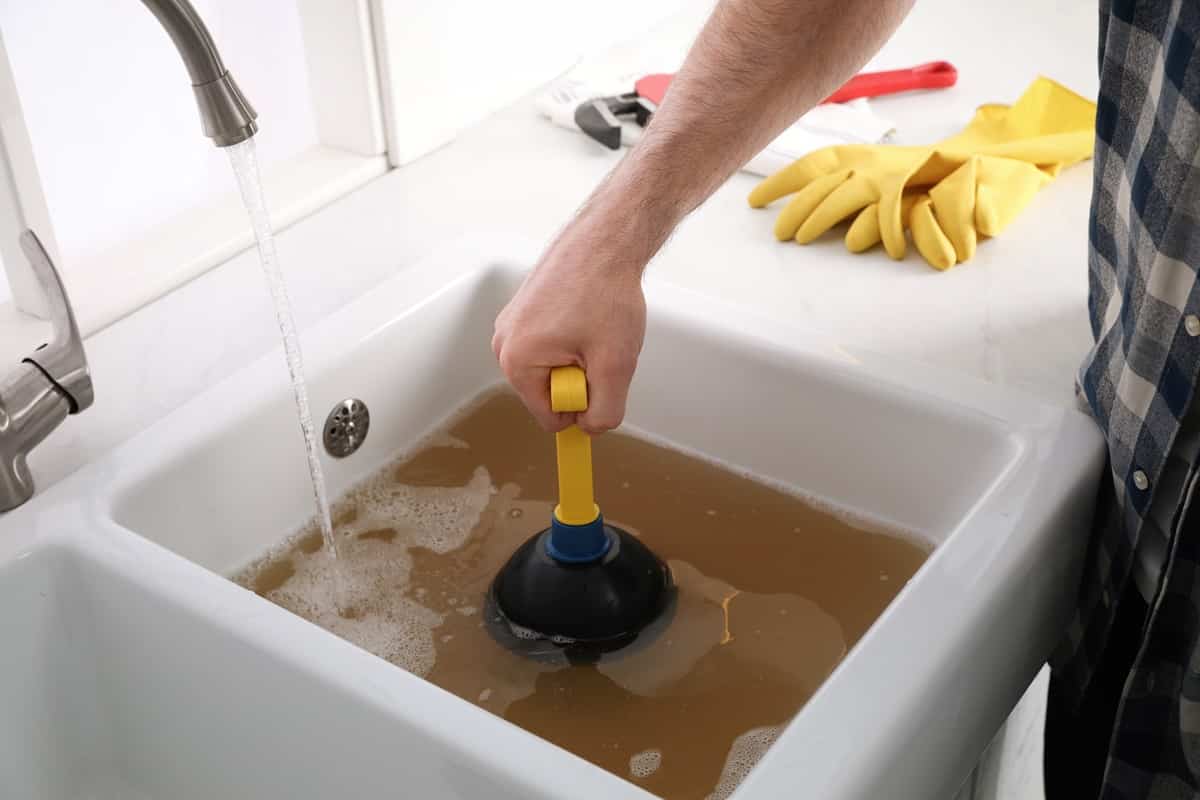
Health and Safety Concerns
Blocked drains caused by paint and building materials can pose various health and safety risks. Understanding the necessary precautions and protocols is essential for ensuring safety during the resolution process.
Required Safety Gear
What Safety Gear Is Required When Dealing with Blockages?
- Gloves: Use heavy-duty gloves to protect hands from hazardous materials and sharp objects.
- Safety Goggles: Wear safety goggles to shield eyes from splashes and debris.
- Respirators: Use respirators or masks to avoid inhaling harmful fumes from paint and chemicals.
- Protective Clothing: Wear long sleeves and pants to protect skin from contact with hazardous substances.
Avoiding Hazardous Fumes
How Can Hazardous Fumes Be Avoided?
- Ventilation: Ensure proper ventilation in the area by opening windows and using fans to disperse fumes.
- Use of Respirators: Wear respirators to philtre out harmful fumes and prevent inhalation.
- Avoid Mixing Chemicals: Do not mix different chemical cleaners, as this can produce dangerous fumes.
Risks of Unsanitary Conditions
What Are the Risks of Unsanitary Conditions?
- Exposure to Pathogens: Blocked drains can harbour bacteria and other pathogens, posing health risks.
- Mould Growth: Damp conditions around blocked drains can lead to mould growth, which can cause respiratory issues.
- Contaminated Water: Water backups can contain contaminants that are harmful to health.
Maintaining Health and Safety Protocols
How Can Health and Safety Protocols Be Maintained?
- Regular Inspections: Conduct regular inspections to identify and address potential blockages before they become severe.
- Proper Disposal: Follow proper disposal methods for paint and building materials to prevent blockages and environmental harm.
- Professional Assistance: Seek professional help for severe blockages to ensure safe and effective resolution.
By adhering to these health and safety guidelines, property owners, business owners, and facility managers can mitigate risks and ensure a safe environment when dealing with blocked drains caused by paint and building materials.
Key Takeaways from This Guide
Blocked drains caused by paint and building materials can be a significant issue for property owners, business owners, and facility managers. Understanding the causes, signs, and preventive measures is essential for maintaining clear and functional drainage systems.
Importance of Preventive Measures
How Can Following Preventive Measures Save Time and Money?
- Regular Maintenance: Implementing regular cleaning and maintenance routines can prevent the buildup of paint and building materials in drains, reducing the likelihood of blockages.
- Proper Disposal: Adhering to proper disposal methods for hazardous materials can prevent costly repairs and environmental damage.
- Early Detection: Regular plumbing inspections can identify potential issues before they become severe, saving time and money on emergency repairs.
Essential Proper Disposal Practices
Why Is Proper Disposal of Paint and Building Materials Essential?
- Environmental Protection: Proper disposal prevents hazardous chemicals from contaminating water sources and harming local ecosystems.
- Regulatory Compliance: Following government regulations for hazardous waste disposal helps avoid legal penalties and promotes sustainable practices.
- Community Health: Responsible disposal practices protect community health by preventing exposure to harmful substances.
Staying Informed and Proactive
How Can Property Owners, Business Owners, and Facility Managers Stay Informed and Proactive?
- Educational Resources: Utilise available resources, such as community programmes and government guidelines, to stay informed about proper disposal methods and preventive measures.
- Professional Services: Engage professional plumbing services for regular inspections and maintenance to ensure the drainage system remains clear and functional.
- Community Involvement: Participate in local initiatives and programmes for hazardous waste disposal to contribute to environmental sustainability and community health.
By understanding and implementing these key takeaways, stakeholders can effectively manage and prevent blocked drains caused by paint and building materials, ensuring a safe and efficient drainage system.
